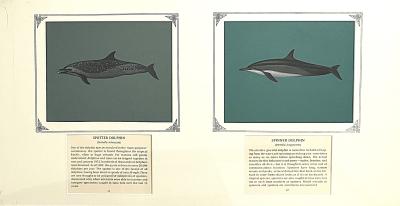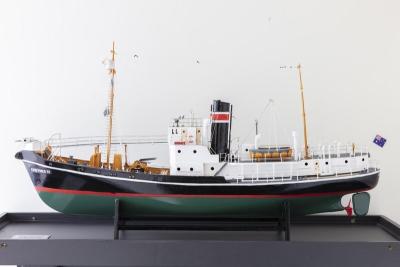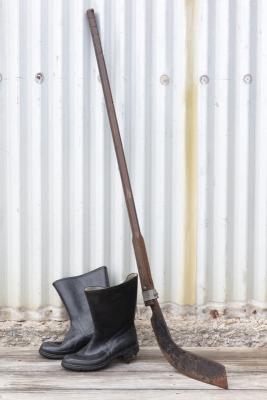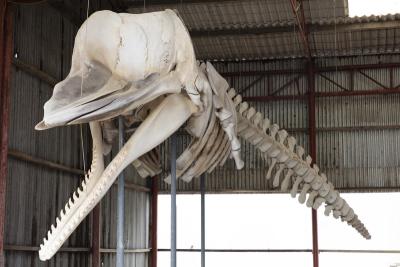PAINTINGS - (a) WEST AFRICAN HUMPBACK DOLPHIN & (b) TUCUXI
c. 19752 paintings in single framed work (a) West African Humpback Dolphin- Slate-grey colored dolphin with a distinctive dorsal hump (8) (b)Tucuxi - Muted blue-grey back and stripe, lighter pinkish belly, triangular dorsal fin, and pronounced beak. (9); gouache on blue card, framed and mounted with inscription
Collection of 106 of paintings by Richard Ellis that were selected by the Smithsonian Institution to form a traveling exhibit of the marine mammals of the world. The collection was purchased by Perth businessman Kevin Parry in 1985 and donated to Whale World, now known as Albany's Historic Whaling Station.
These were originally framed in one frame (were RE.1999.322) & have now been split up & reframed
Details
Details
WEST AFRICAN HUMPBACK DOLPHIN (Souza teuszii)
Very closely related to the Indo-Pacific species, this animal is found only in West African waters, and this geographical isolation has been responsible for its designation as a distinct species. Because of confusion in the earliest descriptions of this species, it was believed to be the only vegetarian dolphin. It now appears that the seeds and grass that were thought to have been found in the stomach of the specimen described in `1892 were actually from the stomach of a manatee that had been caught at the same time. We now know that this species feeds on fish, as do most other dolphins.
8.
TUCUXI (Sotalia fluviatilis)
Because it is a nondescript little dolphin from a part of the world rarely visited by travelers, the tucuxi (named for an Indian word) is one of the least-known dolphins. There is some confusion as to how many species of Sotalia there are, since its range includes most of the rivers and lakes of northern South America (fluviatilis comes from the Latin for "river"), as well as the coastal waters of Venequela, Cuyana, and Surinam. In 1965 an expedition from the Steinhart Aquarium in San Francisco collected several of these, but they [proved to be too delicate, and died.
9.
The paintings represent a body of work by well-known American marine conservationist, author, artist and natural historian Richard Ellis (1938-2024).
Copyright and Reference
Copyright and Reference
Albany's Historic Whaling Station
Albany's Historic Whaling Station
Other items by Richard Ellis
- PRINT -HUMBACK WHALE AND SPINNER DOLPHINS- PUBLISHER PROOF 4/20
- PAINTING -NORTHERN FUR SEAL
- PAINTINGS - (a)SPECTACLED PORPOISE (b)BURMEISTER'S PORPOISE
- PAINTINGS - (a)Longfin Pilot Whale (b)Shortfin Pilot Whale
- PAINTING - BOTTLENOSE DOLPHIN
- PAINTINGS - SPOTTER DOLPHIN (11) & SPINNER DOLPHIN (12)
- PAINTING -HECTOR'S DOLPHIN
- PAINTING - NORTH ATLANTIC BOTTLENOSE WHALE
- PAINTING - HOURGLASS DOLPHIN
- PAINTING - FRANCISCANA
- PAINTING - STRAP-TOOTHED WHALE
- PAINTING - HEAVISIDE'S DOLPHIN




